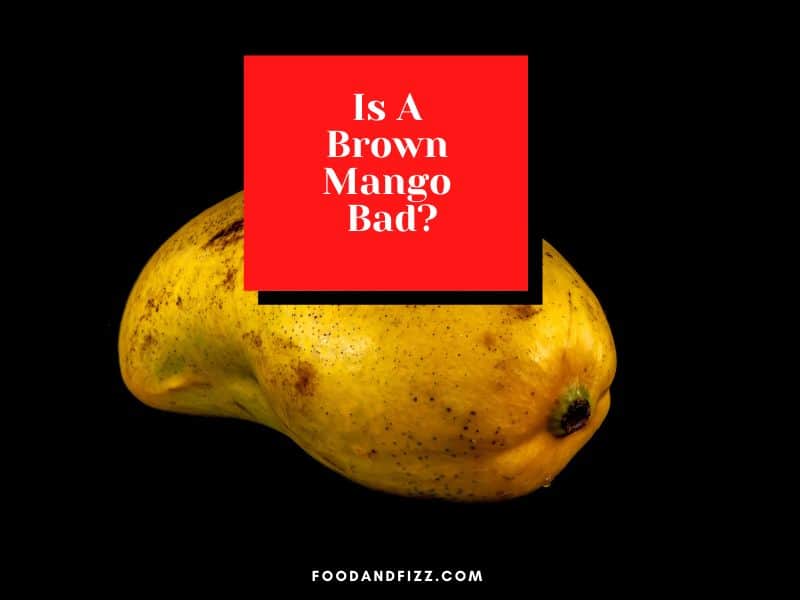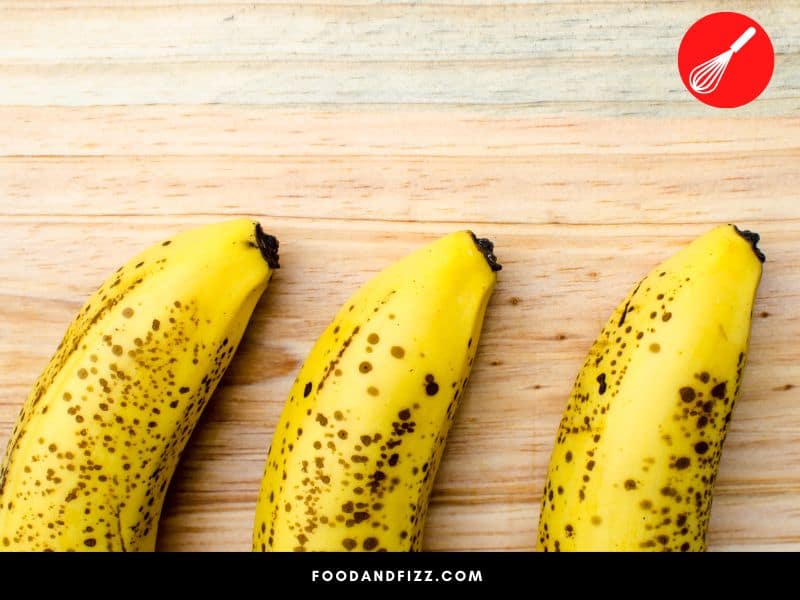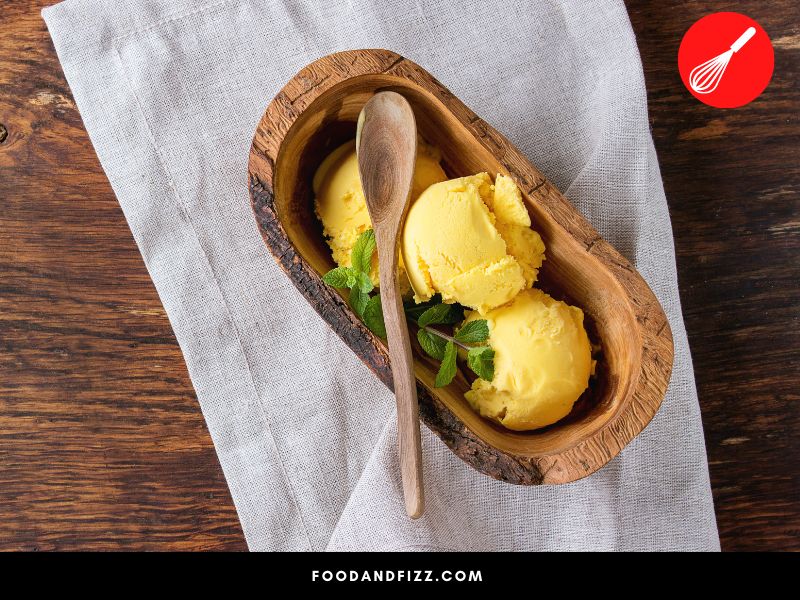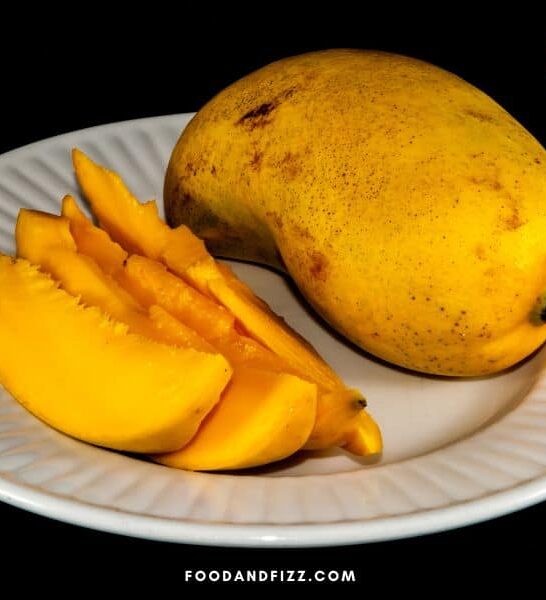Fresh, delectable mangoes should have a light yellow to deep orange-colored flesh.
Any color other than that signals that there’s something going on with the mango. A mango that is brown inside, for instance. What’s wrong with it and should you just toss it?
Is A Brown Mango Bad?
Mangoes may turn brown inside because it is overripe or it has been bruised or damaged. The mango will still be safe to eat but it will probably not taste as good as a perfectly ripe, undamaged mango.

Your Mango is a Spy
You know those spy movies where the protagonist gets a super high-tech, uber-secret message that self-destructs once it has been opened? Well, mangoes are kind of like that. (No, your mangoes won’t just explode on your counter, don’t worry).
Mangoes, as well as other fruits, naturally contain enzymes that can destroy their own cells and hasten their demise. They contain enzymes that can cause them to “self-destruct”.
As the fruit ripens or matures and as the cells lose their ability to function correctly, cell walls break down. Kind of like when you’re getting older, and things do not function as well as they did when you were younger.
Enzymes within the cell are then released, and when these enzymes combine with other compounds in the fruit and are influenced by oxygen, it causes changes in the texture, appearance, and taste of food.
It isn’t really like an active process where the cells just randomly eat themselves and self-destruct. It is more of a process that happens in response to a cell that is losing its functioning, maybe due to cell maturity or due to damage of some sort in the cells, that this enzyme is triggered and then released to do its work.
This process is what is called Autolysis or Enzymatic Spoilage. Also known sometimes as self-digestion, although I know that makes it sound a little bit like it belongs in a horror movie! However, as we mentioned earlier, it is not so sinister. It is what the fruit does in response to damage, either due to maturity or external stress.

The Enzyme Called PPO
This enzyme that is responsible to jumpstart the whole process of “self-destruction” is polyphenol oxidase or PPO.
When cell walls break down and release PPO, this compound interacts with oxygen and transforms the phenolic compounds within the mango into what is known as quinones. These quinones also react with all the other compounds present in the fruit, and in response, melanin is produced.
Melanin is a brown pigment that gives our hair, eyes, and skin their dark color. Having more melanin in concentration means a darker brown color. This is also the same pigment that is responsible for why fruits and vegetables turn a brown color.
If your mango is brown inside, melanin is the culprit. While it does not necessarily mean that the mango is bad at this point, it does mean that it has sustained some damage that caused melanin to be produced.
When melanin is present as evidenced by browning, some other changes are also happening in the fruit that may not make it taste good.

So, Long Story Short, Is a Brown Mango Bad?
A mango that is brown inside is not necessarily bad in that it can harm you or make you sick. It does mean, however, that either the mango is overripe (cell walls break down, PPO is released and combined with oxygen and other compounds to produce melanin that causes brown flesh, all those things), or the mango has become damaged in any way due to external stress. So it may mean the mango is in bad shape.
You may still eat the browning mango at this point, provided there are no other signs of spoilage, but it may not be as good anymore, depending on the severity of the browning. Cutting away just the affected part is always an option, which will allow you to enjoy the rest of the mango as you please.
However, if there is extreme browning going on, it will also mean the mango is probably too mushy, and might be best to just toss it out.
But What Happened And What Did This to My Poor Mango?
A browning mango may be attributed to any of the following reasons:
1. Overripe
As fruits age, they naturally turn brown due to the release of these enzymes that trigger the production of compounds that cause texture, taste and appearance changes in the fruit.
Enzymatic spoilage also opens the door for bacteria to come into the fruit, and hastens its spoilage all the more. When fruits are overripe, they tend to be sweeter and mushier. While they are okay to eat at this point, over time they will break down even more and become unpalatable to eat.
Depending on the extent of browning of your mango the browning flesh may be safe to eat. But expect texture and flavor changes, and do not expect it to taste like fresh mangoes.
2. External Stress or Damage
Mangoes are sensitive. They do not like any kind of stress especially extreme changes in temperature. Subjecting them to any of these for a prolonged period of time will cause damage to the cell walls and trigger the “self-destruct” enzymatic reaction.
If the mangoes were handled roughly, were dropped, or were rubbed excessively, bruising or browning may occur in the flesh. If they are subjected to extremely cold temperatures, or extremely hot, the cell walls may get damaged too.
All mangoes imported to the U.S. are subjected to some form of treatment to make sure that pests like fruit flies do not inadvertently hitch a ride on the mangoes and enter the U.S. and mess with the ecosystem.
Among the ways to prevent this is through what’s called a hot water treatment. Mangoes are essentially given a hot water and chlorine bath to kill fruit flies and other insects and then cooled in controlled conditions before packing and shipping.
This allows the mango to last longer in storage. Most mangoes survive this treatment but there are some if they are the delicate ones, that may exhibit some browning due to the stress of the hot water bath.
If it isn’t because of the hot water bath, mangoes that are rubbed together or dropped or otherwise experience mishandling may also exhibit browning. If your mango is brown on the inside, external stress may be the culprit.
I Don’t Want to Toss My Mango, Can I Still Eat It?
Mangoes that are brown on the inside may still be eaten and are not likely to harm you, but they may not taste very good consumed as is. Especially if it is due to your mango being overripe, it will likely be mushy, too sweet, and overall just not a very pleasant experience to have.
You can still consume it, maybe in a different form, but eating it as is, the way you would fresh mangoes, is not likely going to be very enjoyable.
If the browning is due to bruising, you may cut away the bruised parts and consume the mango as you would.
However, if the mango is mostly already brown inside, or if you see some mold or worms, or anything else that is unpleasant, toss it in the bin!
My Mangoes Are A Bit Overripe and Browned, What Can I Do With Them?
As we said, overripe or bruised browning mangoes can still be used. While you may not be able to snack on them as is, there are other ways that you can use them in recipes.
We’ll look at some ideas below.
1. Mango Smoothie
Who doesn’t love smoothies? Using your overripe mangoes to make your breakfast smoothies is a great way to use overripe mangoes.

It’s easy to offset their natural sweetness by adding more water or adding more milk, or just generally tweaking your ingredients to account for the extra sweetness of the mangoes. The browning color won’t matter as much here too, because you are adding other ingredients to the mix.
My favorite way to use mangoes is to make a smoothie. Sharing a simple recipe below:
Kale Mango Peanut Butter Smoothie
Ingredients:
- 1 cup kale leaves (washed and chopped, tough stems removed)
- 1 cup milk of choice (can be cow’s milk, soy milk or any plant-based milk)
- 1 cup chopped mangoes, frozen
- 2 Tablespoons Natural Peanut Butter
Procedure:
Add your kale, mangoes, milk and peanut butter in a high powered blender and blend to a smooth consistency. You can add more milk to suit your taste or choose to add other things like more peanut butter or other add-ons like chia seeds. Blend some more and then drink and enjoy!
(Sometimes I add some yogurt for extra creaminess.)
2. Mango Ice Cubes
This works well for making smoothies, or if you just want some infused mango water. You can blend your mangoes with some water, maybe add some mint in there too, and freeze them in ice cube trays.
Once frozen, you can either add them to your smoothies or drop them into your glass of water for instant mango and mint-infused water. So refreshing!
3. Mango Puree
You can puree your overripe mangoes and store them in the freezer for use in recipes, like cakes and custards. I make Mango Chiffon Cakes a lot, and use mango puree as a liquid in making the cake base to intensify the mango flavor of the whole cake.
Instead of pureeing fresh mangoes every time I need to make the cake, frozen mango puree is a convenient solution.
I simply allow it to thaw, add some water to get the proper consistency, and I can readily use them in my cakes.
One tip: you may freeze your puree in small batches so that it’s easier to thaw and add to your recipes!
4. Mango Ice Cream
Overripe mangoes can easily be made into ice cream. Simply puree your mangoes, combine them with condensed and evaporated milk, and fold in whipped heavy cream. Place in freezer-safe containers and freeze! Voila! Ice cream!
There is so much more you can do with overripe or bruised mangoes and depending on how brown they are, you can use them to make mango-flavored desserts and recipes with the right preparation.

Final Thoughts: Is A Brown Mango Bad?
A mango that is brown inside is not necessarily bad but it may not taste as good if you eat it as is due to texture and flavor changes. If your mango is overripe or is bruised due to external stress, you may opt to use it in smoothies instead or make mango puree with it for use in other recipes.
Before doing this though, it is important to check if your mango does not have any other signs that it is spoiled and way past its prime. Slightly overripe is fine but beyond this point, it may not be good anymore and no amount of pureeing or flavoring can help make it taste good.
Frequently Asked Questions to Is A Brown Mango Bad?
Can You Eat An Overripe Mango?
In most cases overripe mangoes are fine to consume. Overripe mangoes may be used in smoothies, or to make mango puree or mango ice cream.
When Should You Not Eat A Mango?
Do not eat mangoes that are very mushy and soft and are too far along on the ripening process, or those that smell bad or are leaking unknown substances. Some browning is okay but if your mangoes are completely brown or black, it’s best to just toss it.

